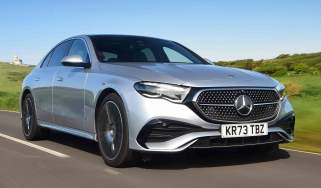What is a plug-in hybrid car? PHEVs explained
Plug-in hybrid cars are growing in popularity in the UK – we cover how they work and whether you should buy one

Plug-in hybrid cars (PHEVs) have been steadily growing in popularity over the past few years, but what separates them from other types of hybrid vehicles, and are they worth buying in 2024?
Many car buyers will be asking themselves those questions when choosing their next car. Not everyone is ready to make the switch to an electric car, so plug-in hybrids represent a vital stepping stone between the petrol or diesel cars that the vast majority of people drive today, and a zero-emissions future. For most owners, the fact that plug-in hybrids can deliver great fuel economy will help them find favour, with the environmental benefits being a happy bonus. Company car drivers, however, will be more interested in the lower CO2 emissions of a plug-in hybrid, as the UK’s Benefit-in-Kind system uses CO2 pollution as the main factor for calculating tax rates.
Read this guide and you’ll understand not only how a plug-in hybrid works, but also whether a PHEV is the right choice for your next car.
What is a plug-in hybrid car?
Like all hybrid cars, a plug-in hybrid uses a traditional petrol or diesel engine alongside one or more electric motors and a battery. The use of two different power sources allows a plug-in hybrid car to achieve better fuel economy than an equivalent petrol or diesel car, but they’re not suited to everyone.

As the name suggests, a plug-in hybrid must be plugged in occasionally to recharge the battery if you’re to get the most out of the system. This isn't the case for other types of hybrid cars – including mild hybrids and self-charging hybrids – which keep their batteries topped up automatically through driving.
We have a complete guide to hybrid cars which explains the differences between mild hybrids, self-charging hybrids and plug-in hybrids in more detail, but the key point to remember is that a plug-in hybrid will only be the most sensible option if you’re able to regularly plug it in to recharge.
How does a plug-in hybrid car work?
A plug-in hybrid car uses an electric motor and battery to power the wheels, as well as a regular petrol or diesel combustion engine. This is no different to popular self-charging hybrid models like the Toyota Corolla or the Honda Civic, which use a small battery to provide enough electric power for travelling shorter distances and low speed electric-only driving. Like these hybrids, a plug-in hybrid can drive using just the combustion engine, the electric motor, or a combination of both, providing extra power for things like overtaking or joining a motorway when extra acceleration is required. Generally, it will revert to electric-only driving whenever possible, in order to save fuel.
A plug-in hybrid differs from a regular hybrid with its much larger battery; for comparison, the Honda Civic hybrid uses a 1.05kWh battery, whereas the Honda CR-V plug-in hybrid has a significantly bigger 18kWh unit. With more electrical energy in reserve, a plug-in hybrid can run in electric-only mode for much longer before the combustion engine has to kick in – some of the latest PHEVs can travel upwards of 60 miles without using a drop of fuel.
In order to make the most of that large battery, however, a plug-in hybrid will need to be recharged through an external source. They can partially self-charge when the battery runs low in the same way as a regular hybrid, but you’ll still need to plug into a charger for a complete top up. Plug-in hybrids can be charged at home through a wallbox or domestic socket, or via a public charger, the latter of which will deliver the fastest charging speeds.
Are plug-in hybrid cars cheap to run?
In many cases, a plug-in hybrid car will be cheaper to run than a similarly-sized petrol or diesel car, but that’s not the case for everyone. Thanks to their relatively large batteries and practical electric-only driving range, plug-in hybrid cars can switch off their combustion engine to save fuel in many low speed scenarios, instead relying purely on electric power.
If the majority of your journeys are short distance and at low speeds, a plug-in hybrid can dramatically cut your fuel bills. With an electric driving range of around 30 to 60 miles, many plug-in hybrids will be able to manage a daily commute in electric-only mode, not using a drop of fuel. However, the combustion engine remains in reserve for when you plan to take a longer trip.
Many plug-in hybrids are quoted as achieving sky-high fuel economy figures, sometimes beyond 500mpg – you can read our list of the most fuel-efficient cars to find out which are the most frugal – but be warned, those triple-digit fuel efficiency figures are only achievable in the real world if you spend most of your time driving in electric-only mode on shorter, more local journeys.
On the other hand, if you spend most of your time on the motorway or at high speeds, you’re unlikely to see the same fuel economy benefits. That’s because the combustion engine will be doing the majority of the heavy lifting, with the electric motor only providing some assistance. A long motorway journey in a plug-in hybrid could even use more fuel than the same trip in a modern diesel car, and one of the primary reasons for this is the added weight of the electric motor and battery.
The other factor to consider is charging. If you’re unable to keep the battery topped up, then the plug-in hybrid system won’t be able to do its job at all, regardless of whether the journey is short or long. If you’re able to regularly recharge the battery at home, then you’ll be getting the most out of the system. If you’re unable to charge at home, then you could use a public charger, but be warned that these are much more expensive than home charging, inflating running costs and negating one of the key reasons you’d buy a plug-in hybrid car.
Should I buy a plug-in hybrid car?
Plug-in hybrid cars are ideally suited to those who largely stick to urban driving but still want a conventional combustion engine for the odd long trip. They’re also aimed at drivers who have somewhere to plug in and recharge their car – ideally at home where charging costs are lowest.
However, if you spend most of your time driving on the motorway, a plug-in hybrid probably isn’t the best choice, as the fuel efficiency gains won’t be huge. Any minor fuel bill savings are unlikely to outweigh the added cost of a plug-in hybrid car over a regular petrol or diesel car.
Things are different if you’re a company-car driver. Opting for a plug-in hybrid could save you a huge chunk of cash compared to a traditional petrol or diesel car, and the reason for that is down to the way carbon dioxide (CO2) emissions are measured. As you may know, company-car tax, or Benefit-in-Kind (BiK), is levied according to a car’s CO2 emissions. The lower these emissions, the lower the car’s tax liability.
Plug-in hybrids can be expected to run in electric mode for much of the official test cycle, and when using the power in its batteries, it produces no CO2 at all. This means that plug-in hybrid cars frequently emit under 50 grams per kilometre (g/km) of CO2 in official tests, which is the upper limit of the lowest Benefit-in-Kind brackets.
The importance of this to company car buyers can’t be overstated. Put simply, a car in the 8% BiK bracket will potentially cost half as much in company car tax as one in the 19% bracket.
Of course, BiK is based on the taxable (P11D) value of a given car. And, while it’s true that a plug-in hybrid usually costs more to buy than a petrol or diesel model, most will cost you substantially less in annual company-car tax than a pure petrol or diesel-powered equivalent.
To conclude, a plug-in hybrid’s ability to save you money is skewed heavily in favour of company car users, but urban-living low-mileage private buyers may well see the benefits as well.
What is a range-extender hybrid?
Technically, an electric car with a range extender is a type of plug-in hybrid, as it uses both a combustion engine and an electric motor and can be recharged via an external source. However, these are best thought of as EVs with a small on-board power station. You use it in the same way as an electric car, charging it overnight as needed for use the next day. However, you’re not limited to the range dictated by the level of charge in its battery pack. The power station – usually a small petrol engine – is on high alert, ready to charge the battery pack if its charge drops below a certain level.
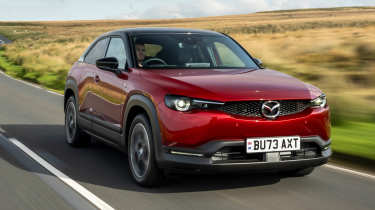
Although range-extenders are typically classified as hybrids, the following distinction needs to be remembered. All hybrid cars will, at some point, use their conventional engines to provide propulsion, whereas most range-extender cars cannot.
One example of a range extender is the Mazda MX-30 R-EV – essentially an MX-30 electric car fitted with an auxiliary engine under the rear boot floor to provide electricity, increasing its range beyond the limits of its battery. While vehicles of this type typically use electricity alone to operate, the small fuel tank will need filling up from time to time as a backup.
You can read more about range-extender cars in our separate guide to electric cars.
Disadvantages of plug-in hybrid cars
While regular hybrid cars tend to be more expensive to buy than their petrol-powered equivalents, the same is even more true of plug-in hybrids. Much of the increased cost is due to a more powerful, higher-capacity or more advanced battery than those used in regular hybrids. There’s also extra equipment required for charging directly from the mains and there may be higher manufacturing costs to produce the car in the first place. This means that the added technology and complexity of a plug-in hybrid will usually make it more expensive to buy than a normal hybrid.
It’s worth remembering, though, that you’ll need access to a mains supply or fast charger close to where you regularly park in order to charge your plug-in hybrid. Although the national electric car charging infrastructure is rapidly expanding, you may find overnight or daytime charging tricky to achieve if you find it difficult to park outside your house or office for more than a couple of hours, and even trickier if you live in a flat without the right infrastructure in place. Read our complete guide to charging without a driveway for ways to work around this.
Plug-in hybrids may also be slightly compromised where practicality is concerned in comparison to their conventional counterparts. This is because the large battery pack is usually placed below the boot floor, affecting boot space.
Plug-in hybrids: electric-driving range
Just how far a plug-in hybrid car can travel – known as its range – in electric-vehicle (EV) mode alone varies from car to car. However, with the option to fully charge the battery from a mains supply before you embark on your journey, you’ll be able to drive further than in a regular hybrid before the battery needs topping up, either from the engine cutting in or when you next plug it into a mains supply.
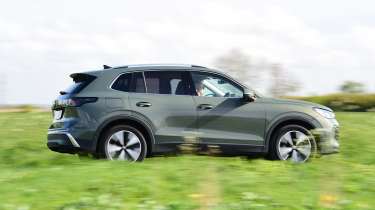
For example, the Volkswagen Tiguan plug-in hybrid has a range of over 75 miles in all-electric mode. This is more than enough to cover most drivers’ morning commute, with the petrol engine boosting the battery in higher-speed parts of the journey and electric power alone in stop-start traffic. Most regular hybrids aren’t designed to drive for extended periods of time in electric-only mode, with the combustion engine usually cutting in above 30mph.
Plug-in hybrids: battery life
As with electric vehicles, a common fear when it comes to hybrids is battery life. As anybody with a mobile phone or a laptop computer knows, battery performance inevitably degrades over time. To counter this, some hybrid cars come with a warranty that specifically covers battery degradation.
For instance, Kia outlines its expectations for the battery life of its plug-in hybrid model range within the careful wording of its policy: "The Lithium-Ion Polymer Battery warranty covers a minimum capacity for a period of 84 months or 100,000 miles from the date of first registration, whichever comes first. This warranty covers repairs needed to return the battery capacity to at least 70% of the original battery capacity. Where possible, the original EV battery components will be repaired and will be returned to the vehicle. If unrepairable, the: EV/PHEV Battery will be replaced with either a new or remanufactured Lithium-Ion Polymer Battery.”
It’s worth remembering, though, that hybrid car battery packs are specifically designed to survive any demands that could be reasonably expected from the vehicle. Toyota, for example, states that its hybrid and plug-in hybrid battery packs are intended to last the lifetime of the car. The standard battery warranty covers five years or 100,000 miles, with Toyota also offering Hybrid Battery Extended Cover, which adds an extra year or 10,000 miles of coverage. This can be renewed up until the car is 15 years old, with no restriction on the total mileage.
For its older hybrid models, Toyota also has a clause in its warranty that specifically states the cover provided for a battery pack, with the duration of warranty cover depending on when the car was built. For example, cars registered between 1 June 2010 and 31 March 2014 enjoy an eight-year/100,000-mile warranty specifically for their battery packs. It’s therefore worth checking with your dealer exactly what the battery warranty period will be for your particular car.
What plug-in hybrid cars are there to choose from?
Most manufacturers now offer electric or hybrid versions of at least one car in their range, and many are now introducing plug-in technology, too. Plug-in hybrids come in all shapes and sizes; from family hatchbacks to large SUVs, there will be something to suit your lifestyle. We regularly update our list of the top 10 best plug-in hybrid cars on the market which is a good place to start if you’re in the market for a PHEV.
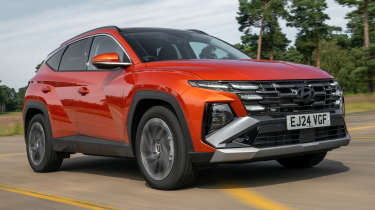
Some of the UK’s best-selling cars, including the Hyundai Tucson and Kia Sportage, are offered as plug-in hybrids alongside the regular combustion models. There are plenty of other plug-in hybrid SUVs to choose from, too, with premium offerings such as the BMW X5 and Mercedes GLC offering some of the longest electric driving ranges.
Plug-in hybrid government grants
There is no longer a plug-in grant from the UK government after the initial £2,500 grant scheme was axed in 2018. A second plug-in car grant (PiCG) for fully electric vehicles introduced in 2021 for vehicles costing less than £32,000 was then removed in June 2022 and did not apply to plug-in hybrid vehicles.
Although there is no longer a grant for the purchase of electric vehicles or plug-in hybrids, a grant for a home charging point remains for people living in rented accommodation and homeowners who live in flats with dedicated off-street parking. Up to 75% of the cost of buying and installing a home charge point, up to a maximum of £350, can be claimed from the government-backed initiative EV charge point grant scheme.
If this all sounds too good to be true, it is, because to qualify for this scheme, you must fulfil the following strict criteria: You must own one of the eligible cars for the subsidy from the current list here.
- Only those living in flats or rented accommodation may apply – homeowners living in single-unit properties such as houses and bungalows are no longer eligible as of March 31 2022.
- Applicants must have dedicated off-road parking at their flat or rented property.
- Owners must be able to prove ownership of an eligible car, or that an order has been placed for an eligible model for delivery within four months of the installation date of a charger.
However, unlike the now-discontinued Electric Vehicle Homecharge Scheme, EV owners will not be able to claim the grant for a second EV charger if they own another electric vehicle.
Frequently Asked Questions
Whether a regular hybrid or a plug-in hybrid is the right option for you depends on how you plan to use your car. If you mostly cover shorter journeys, are able to regularly plug in a PHEV and keep the battery topped up, then you could see some big fuel savings.
If you don’t have the space to charge a PHEV, or if you spend the majority of your time driving on the motorway, then a plug-in hybrid doesn’t make a great deal of sense. You’ll more likely be better served by a normal hybrid.
Read more about hybrid cars, mild hybrid cars and electric cars.
Electric cars made simple
Recommended
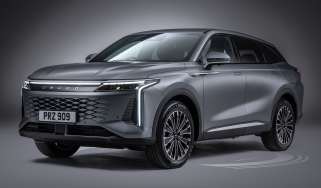
New Omoda 9 PHEV arrives with 93-mile electric range and huge kit list
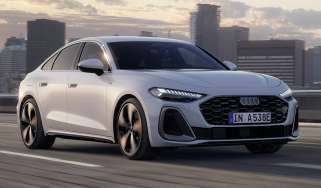
New Audi A5 e-hybrid PHEV beats BMW 330e for speed and range
Most Popular

Suzuki’s new 10-year warranty is free – here’s how to get it
Tips & advice

Car dashboard warning lights: what does each symbol mean?

Electric car charging stations: public networks, charger types, apps and maps


